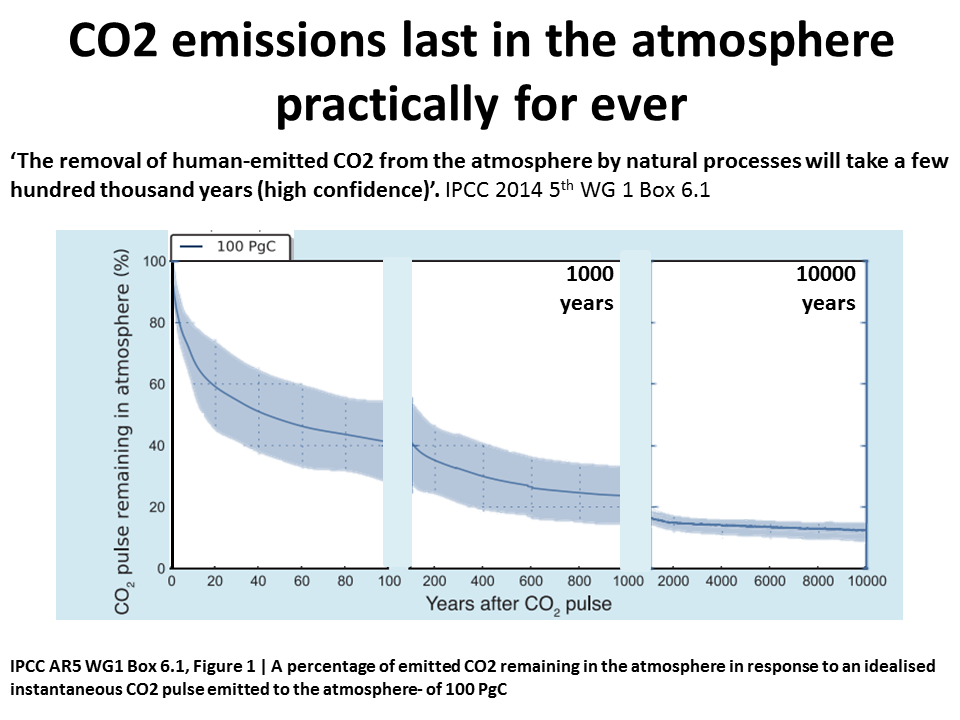ONLY ZERO CARBON ONLY ZERO CARBON ONLY ZERO CARBON ONLY ZERO CARBON ONLY ZERO CARBON ONLY ZERO CARBON ONLY ZERO
Science
carbon cycle
carbon cycle
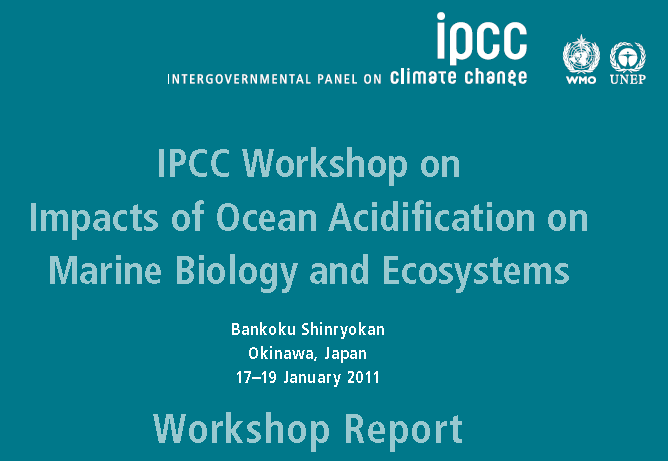
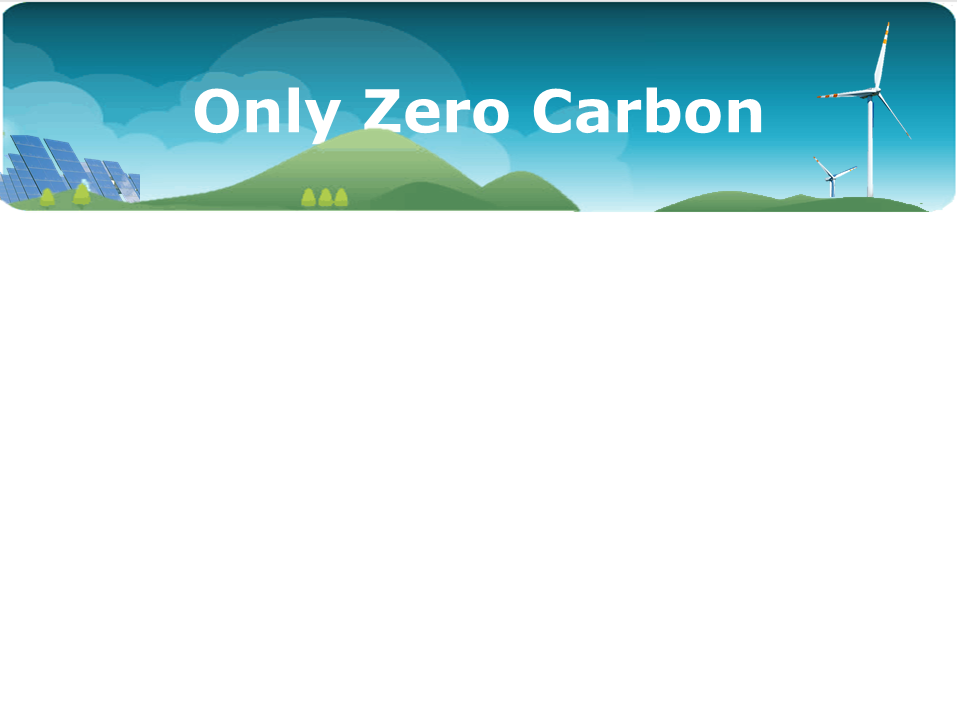
The essential fact to know is that there are two carbon cycles.
There is a short term and an ultra long term cycle.
The cycles are terrestrial (land) and ocean.
The Carbon Cycle and How It Influences Climate. an excellent essay from American Museum of Natural History
Video of simple bathtub analogy
Climate Interactive Bathtub simulation
National Geographic Bathtub analogy for the significance of the carbon cycles for climate change.
The carbon cycle before industrialization was in balance
1. Short term carbon cycle
This cycle operates over one to a few hundreds of years.
What are often called carbon sinks like tropical forests only store carbon temporarily. The only real carbon sinks operate by the long term cycle.
This is what 'the carbon cycle' is understood to be, but it cannot help us to mitigate global warming and climate change because it does not remove CO2 from the atmosphere in time frame for humanity. It recycles carbon between the atmosphere land and ocean.
It depends on life food chain on land and in oceans.
For both the land and oceans this cycle works by photosynthesis of green plants, the largest contribution comes from ocean surface phytoplankton - the tiniest of green plants.
Photosynthesis captures energy from sunlight via chloroplast cells which energizes the growth and metabolism of the plant. But when the plant decays and dies that CO2 is returned to the atmosphere.
On land the dead life sinks through the ground and is thereby pressurized. over millions of years this forms coal oil and natural gas.
In the oceans the carbon sinks to the ocean floor by means of what is called the ocean biological carbon pump by which atmospheric carbon is incorporated into sea shells as calcium carbonate.
2 Long term carbon cycle
It is only this extremely long term carbon cycle that sinks carbon in terms of removing carbon (CO2) from the carbon cycle in relevant to humanity and most life.
It operates over thousands to hundreds of thousands of years through the land and oceans. In both cases the organic carbon from dead life forms is pressurized over ages of time to form solid fossil carbon.
On land this is fossil carbon- coal, oil and gas. The coal we burn up in no time took millions of years to form.
The ocean process forms rock- limestone and dolomite. This starts with the minute ocean surface plants called phytoplankton. This is how most of the carbon dioxide gets absorbed. Through the ocean food chain the carbon gets converted by shell forming organisns to calcium carbonite. Through ages of time and pressure in the ocean floor sediment, calcium carbonate based rock is formed- limestone and dolomite.
We are rapidly returning this carbon to the atmosphere by burning it. Land fossil carbon we burn to produce heat energy as fossil fuels. Limestone we burn to make cement.
Because it takes so extremely long to sink atmospheric CO2 our emissions will last in the atmosphere 'for ever' on the human time scale, making global climate change and ocean acidification in effect irreversible. (IPCC AR5 WG1 Exec summary)
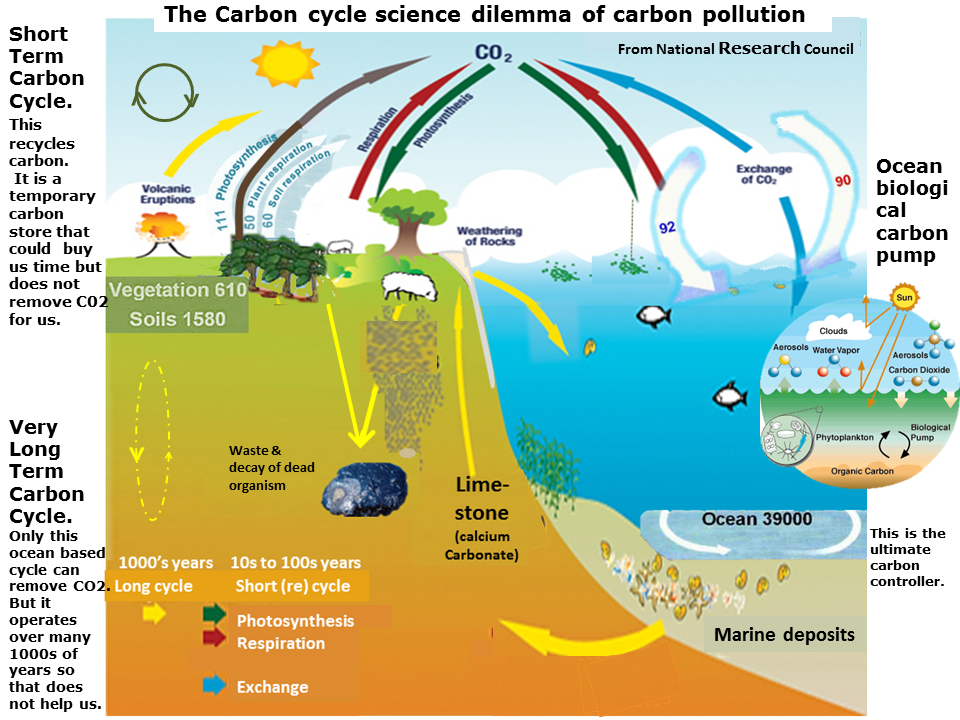
Composite NRC and UNEP
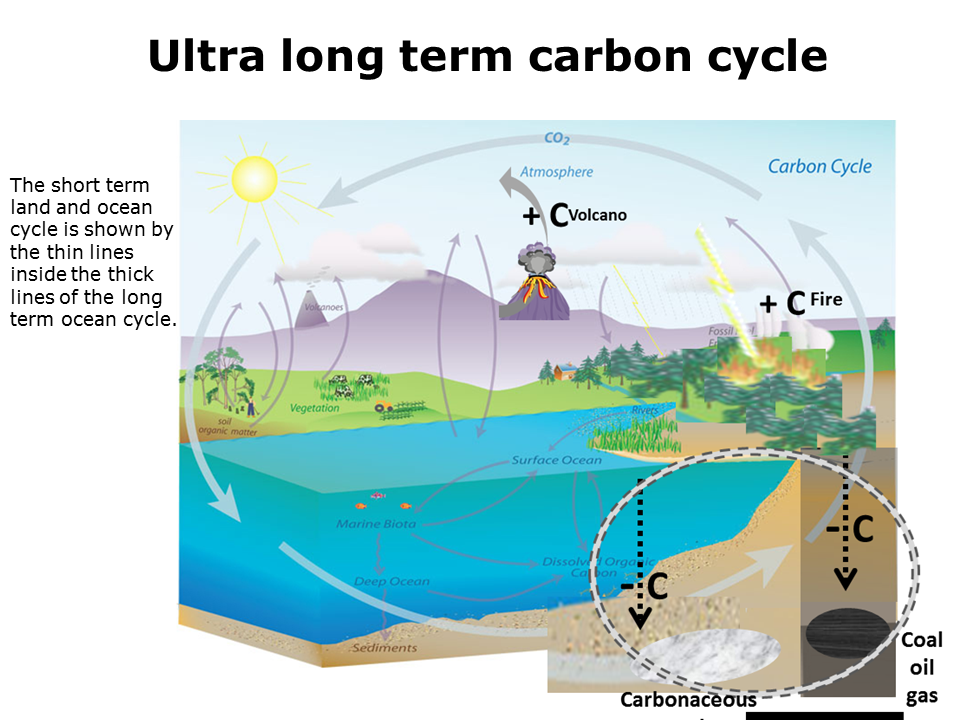
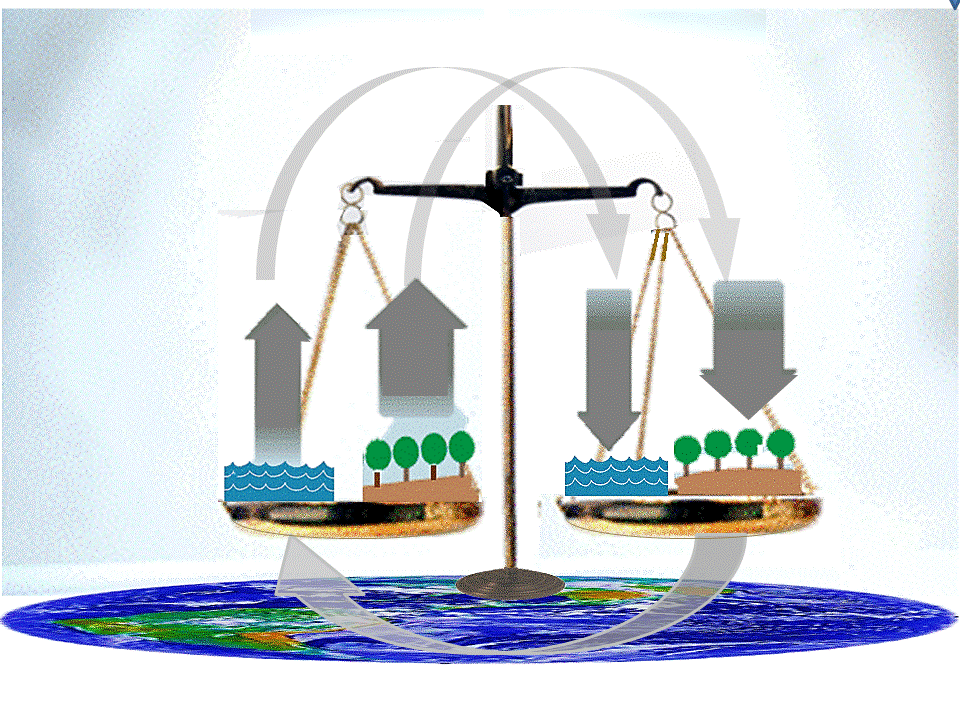
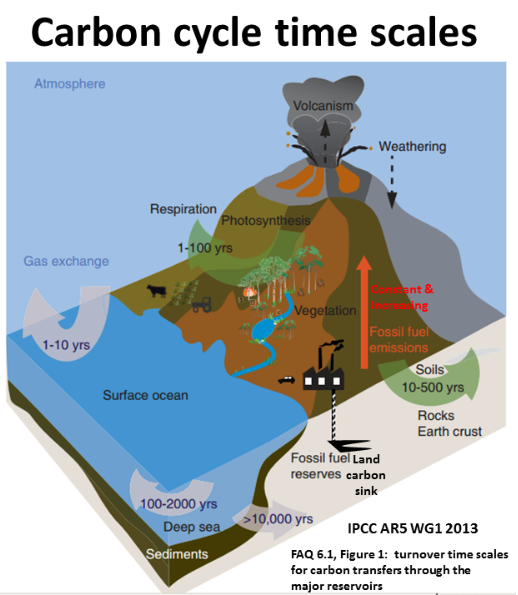
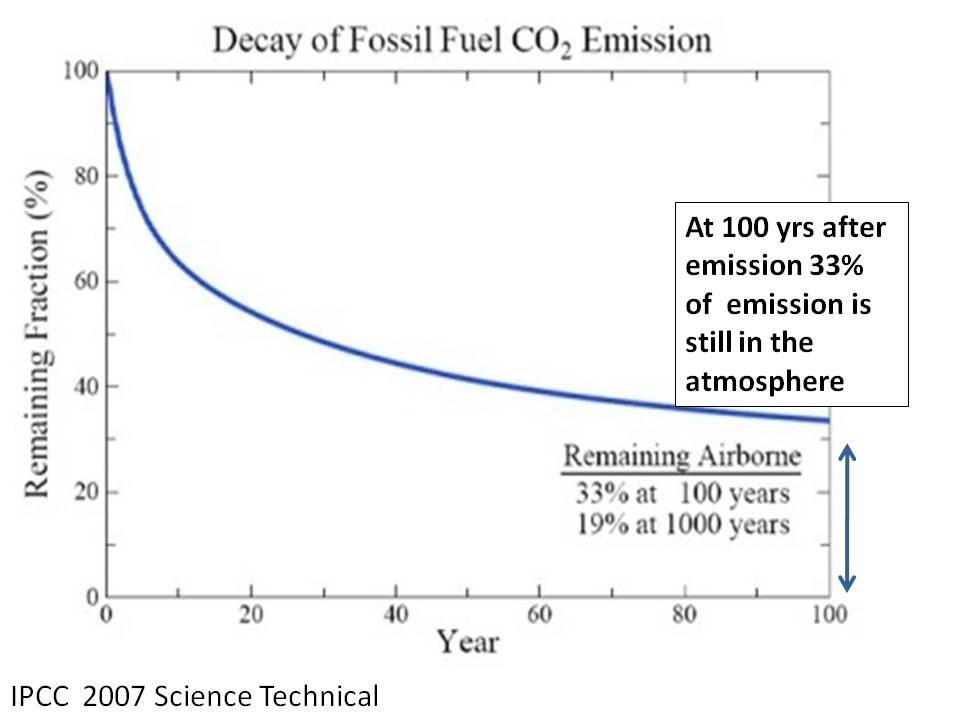
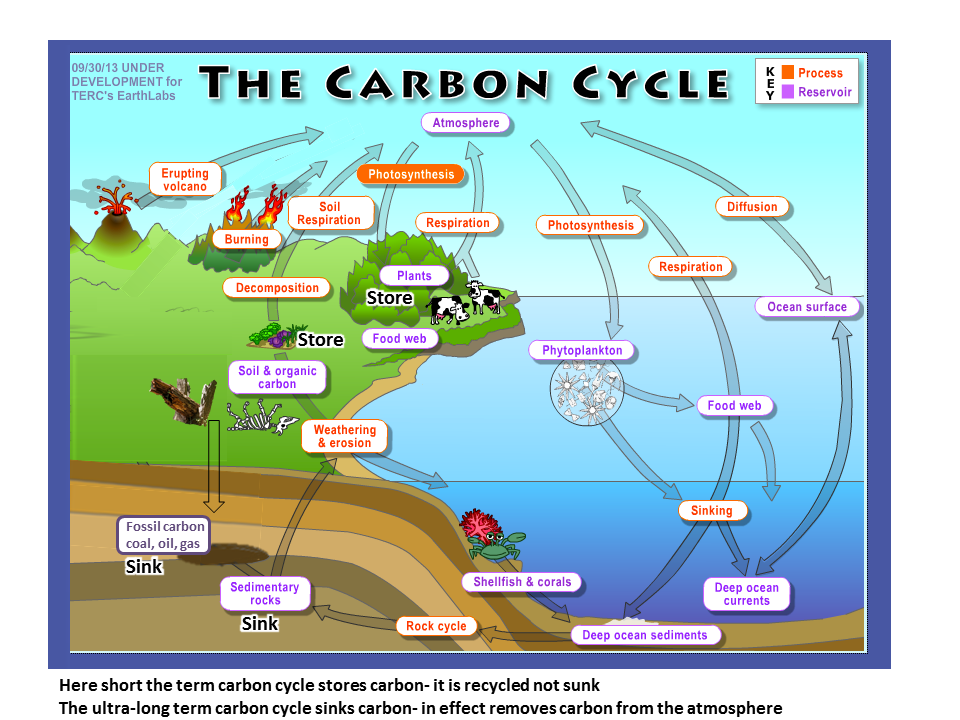
National Research Council 2011
CO2 atmospheric lifetime
CO2 atmospheric lifetime
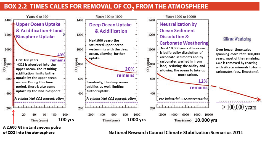
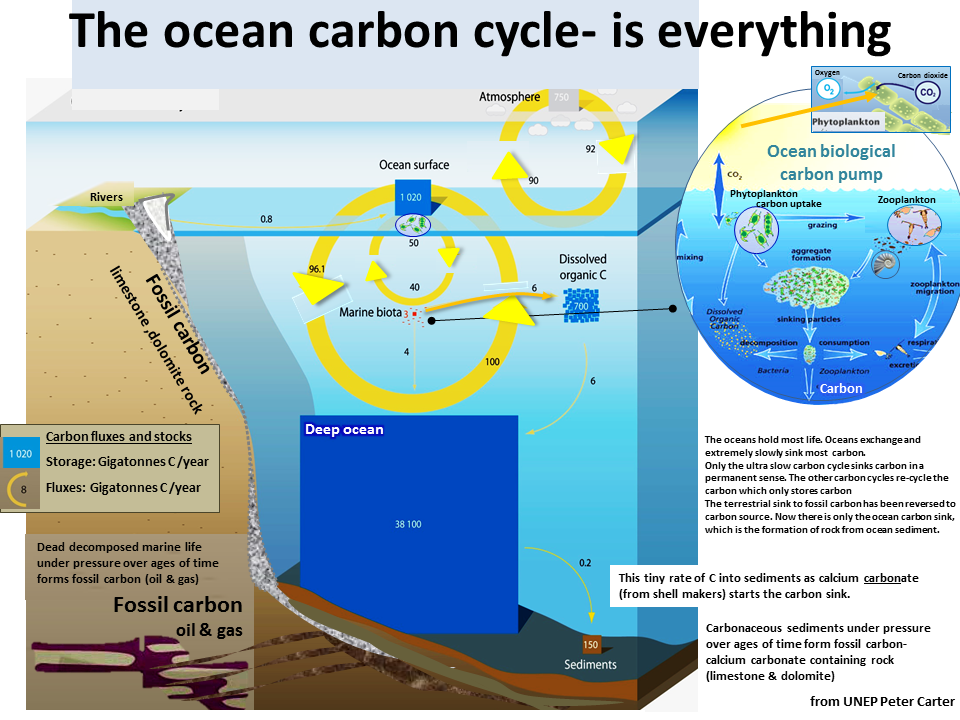
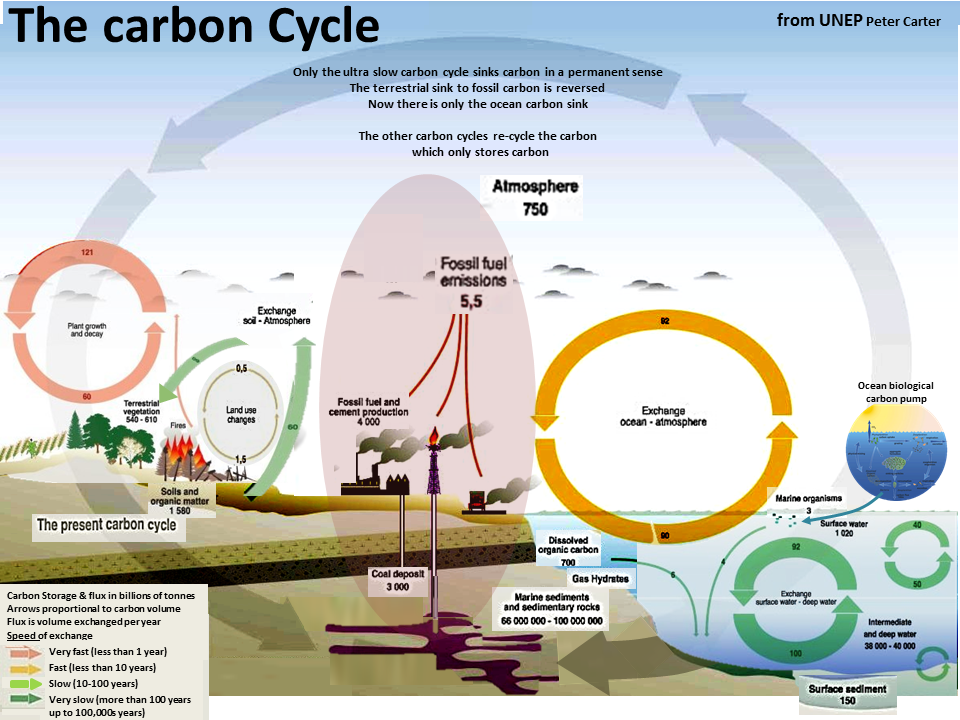
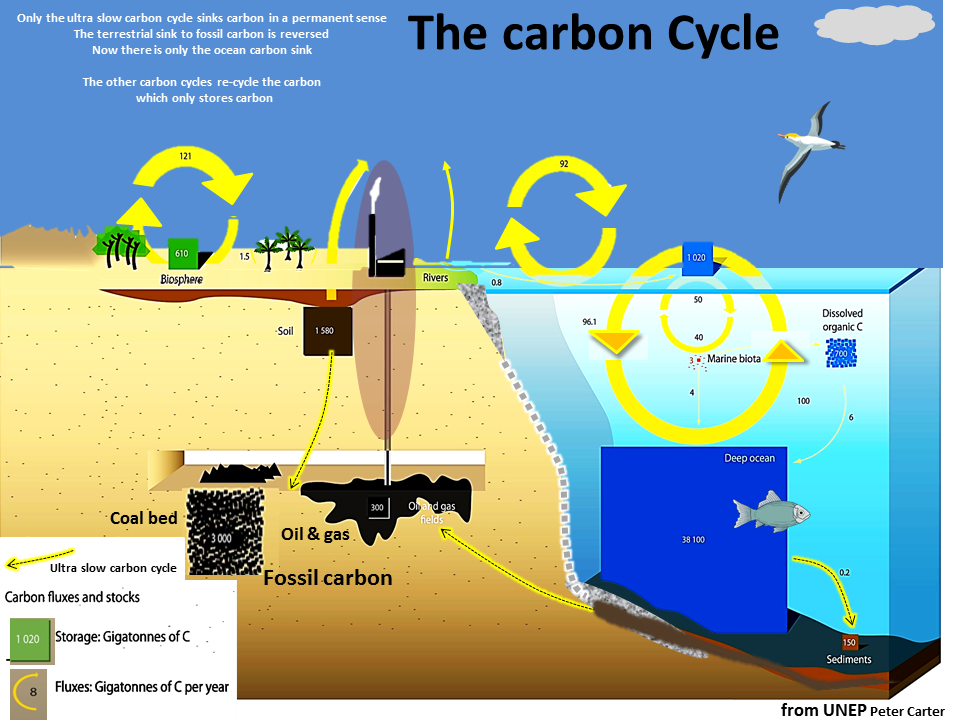
The big climate change significance of the carbon cycled is that the atmospheric concentration of CO2 cannot stabilize long term unless all fossil fuel and industrial carbon emissions stop (only zero carbon).
We cannot offset carbon emissions by planting trees, because the carbon the trees take up is stored for a while, to be returned to the atmosphere as the trees age and die.
Nor can we offset ocean acidification.
Most of the carbon absorbed by the green leaves through photosynthesis is stored in the forest floor litter. Disturbing the
forest floor by planting trees releases a lot of the stored carbon.
We cannot offset carbon emissions by planting trees, because the carbon the trees take up is stored for a while, to be returned to the atmosphere as the trees age and die.
Nor can we offset ocean acidification.
Most of the carbon absorbed by the green leaves through photosynthesis is stored in the forest floor litter. Disturbing the
forest floor by planting trees releases a lot of the stored carbon.
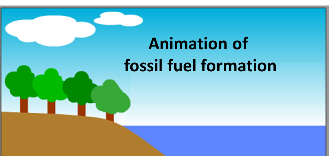
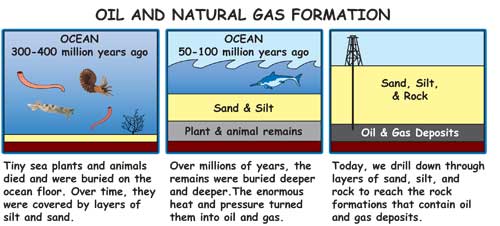
Coal formation

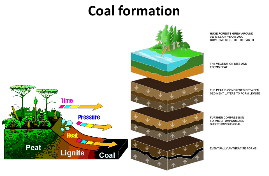
VIDEO oil and gas formation with time line
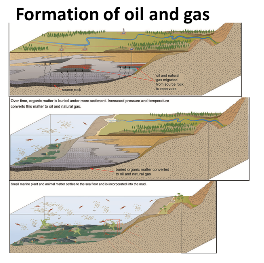
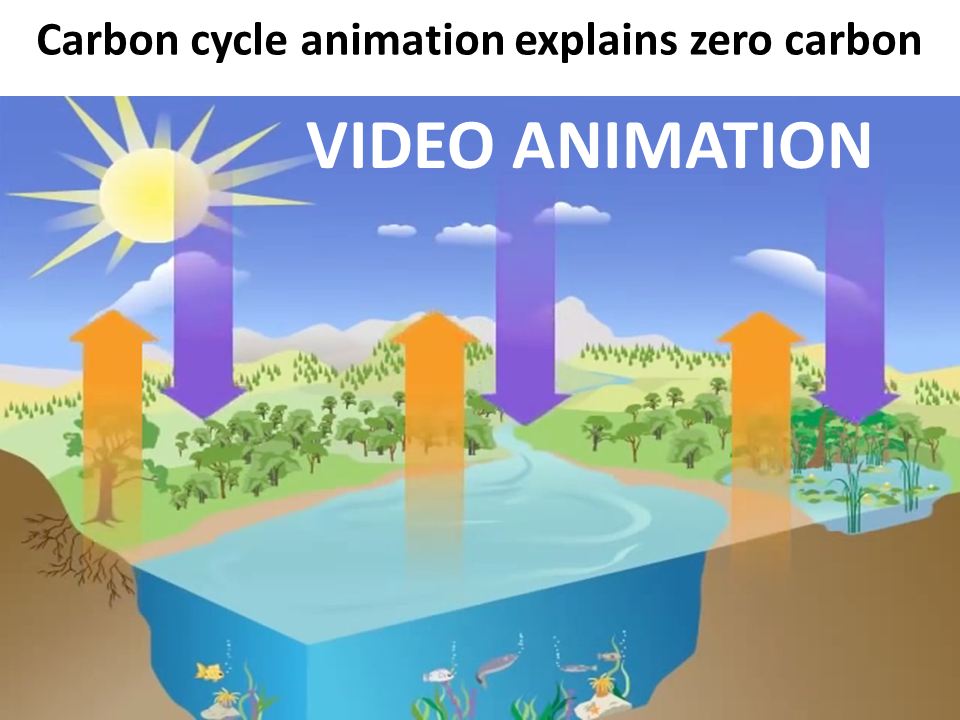
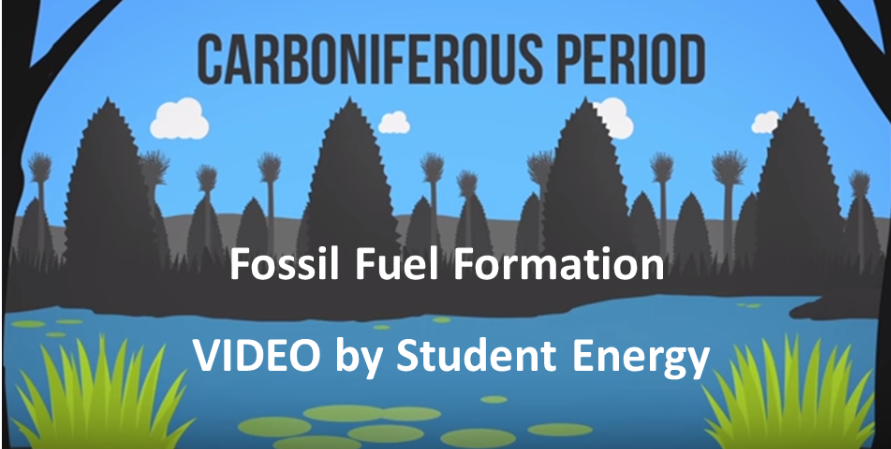
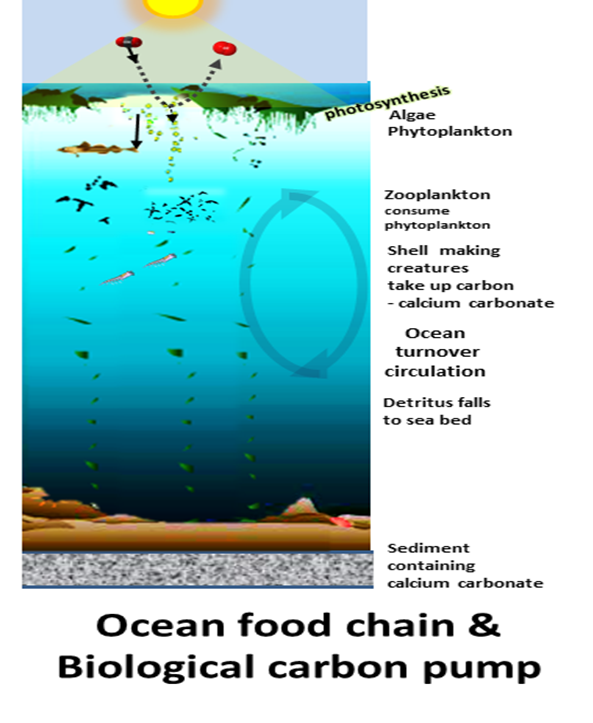
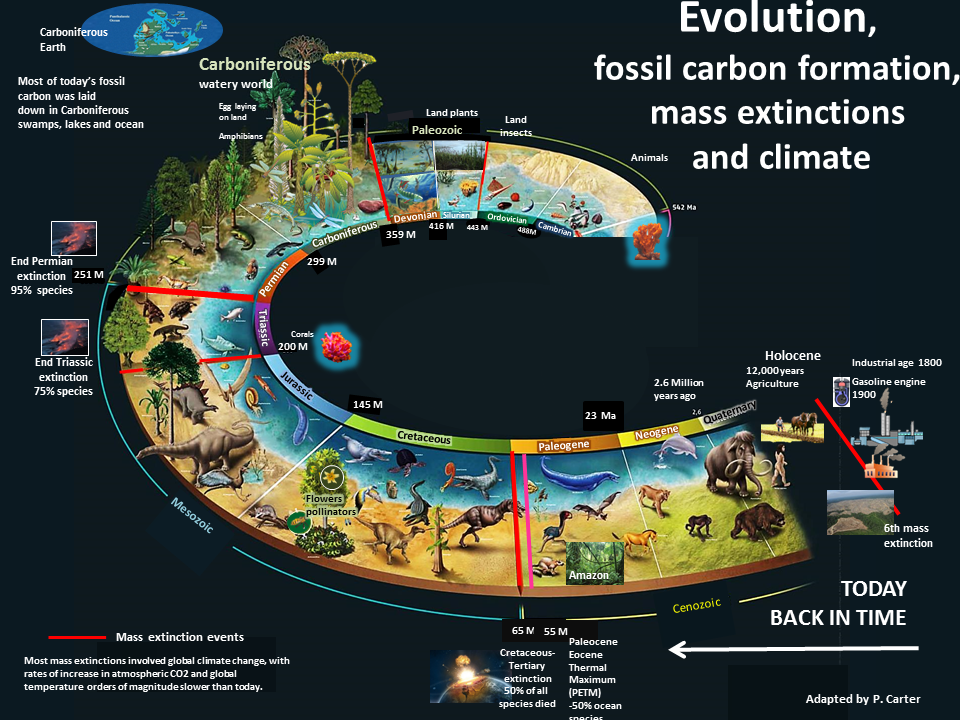
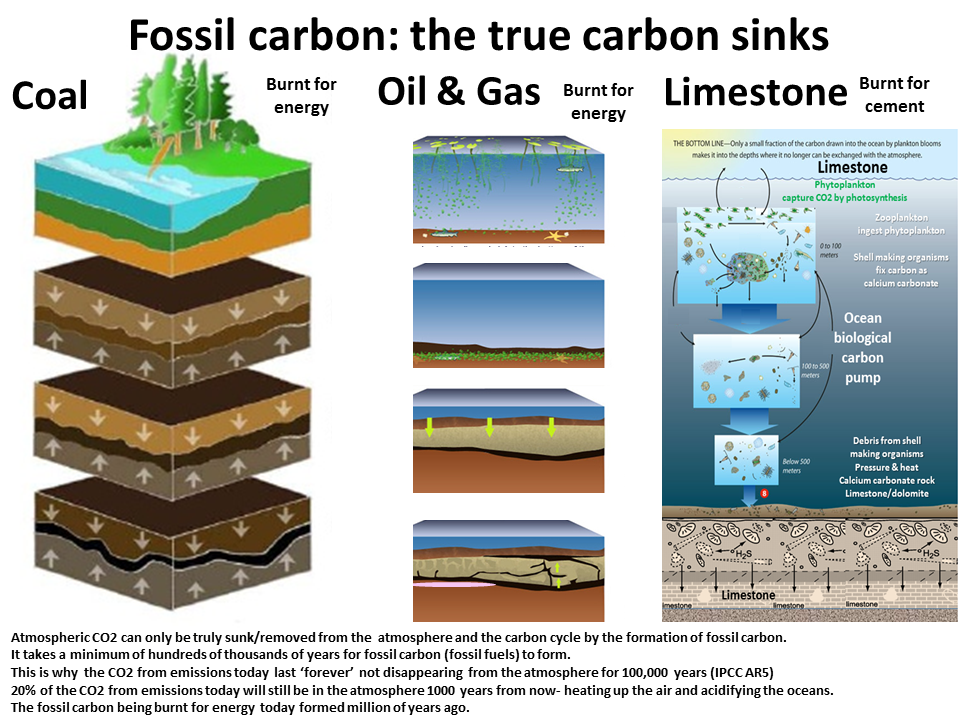
Lots of illustrations here to help understand the carbon cycle(s).
It is the carbon cycle that determines the fact that global warming, climate change, and ocean acidification can never stabilize without our civilization stopping the constant industrial addition of carbon dioxide to atmosphere.
It is the carbon cycle that determines the fact that global warming, climate change, and ocean acidification can never stabilize without our civilization stopping the constant industrial addition of carbon dioxide to atmosphere.
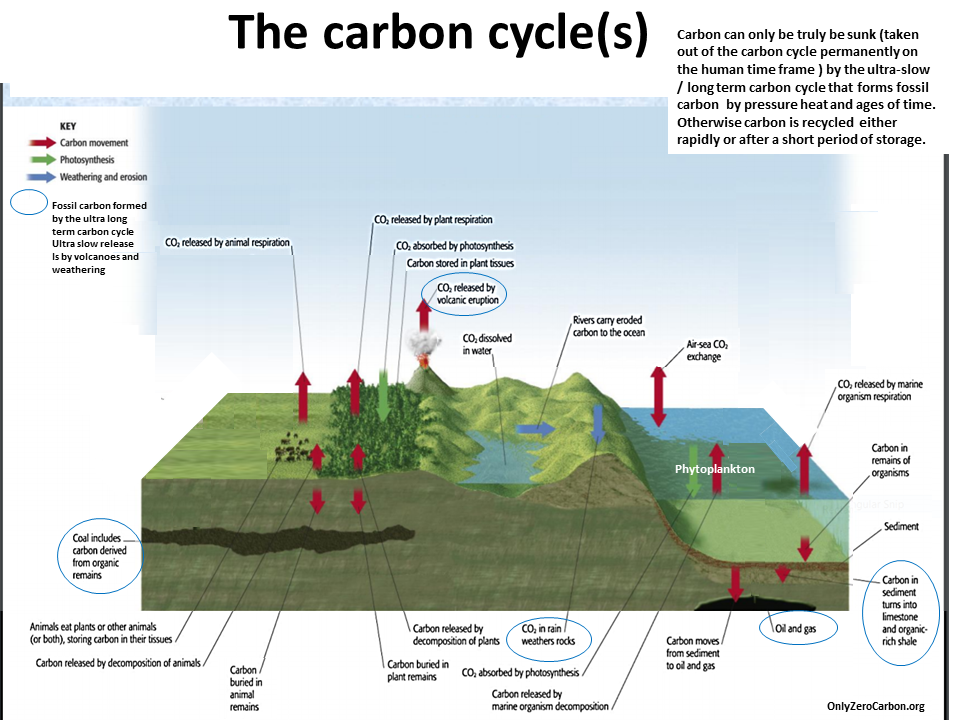
The carbon cycle is now
'perturbed', messed up by
constant fossil fuel emissions.
It is still in balance but in a
way that builds up a carbon
debt of planetary catastrophe.
'perturbed', messed up by
constant fossil fuel emissions.
It is still in balance but in a
way that builds up a carbon
debt of planetary catastrophe.
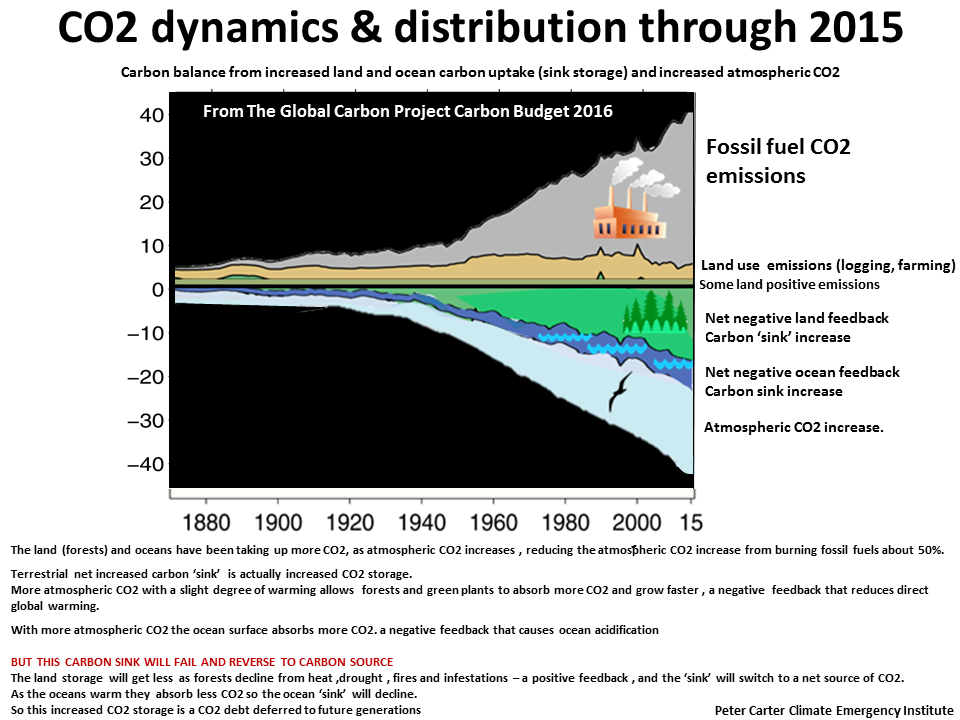
Fossil [Fuel] Carbon Sink Formation. To understand the carbon cycle in global climate change and ocean acidification, we start with the formation of fossil fuels, which are actually forms of fossil carbon.
Most of us know that the formation of coal, oil and gas goes back to the deep distant past-in fact many millions of years ago. The geologists know that the coal oil and gas burnt today took millions of years to form. Sinking carbon (removal from the carbon cycle) takes at least hundreds of thousands of years. The process is that slow.
'Fossil fuels were formed from plants and animals that lived 300 million years ago in primordial swamps and oceans. Over time the plants and animals died and decomposed under tons of rock and ancient seas
Eventually, many of the seas receded and left dry land with fossil fuels like coal buried underneath it' (US Dept. of Energy).
Coal was formed going back 300 million y6ears with the youngest coal 1 million old.
Oil and gas go back many hundreds of millions of years ago, up to 40 million years ago.
There are two carbon GHGs involved in the carbon cycle - carbon dioxide (CO2) and methane (CH4). A small proportion of emitted methane is oxidized to CO2 in the atmosphere. Here we look only at CO2.
Most of us know that the formation of coal, oil and gas goes back to the deep distant past-in fact many millions of years ago. The geologists know that the coal oil and gas burnt today took millions of years to form. Sinking carbon (removal from the carbon cycle) takes at least hundreds of thousands of years. The process is that slow.
'Fossil fuels were formed from plants and animals that lived 300 million years ago in primordial swamps and oceans. Over time the plants and animals died and decomposed under tons of rock and ancient seas
Eventually, many of the seas receded and left dry land with fossil fuels like coal buried underneath it' (US Dept. of Energy).
Coal was formed going back 300 million y6ears with the youngest coal 1 million old.
Oil and gas go back many hundreds of millions of years ago, up to 40 million years ago.
There are two carbon GHGs involved in the carbon cycle - carbon dioxide (CO2) and methane (CH4). A small proportion of emitted methane is oxidized to CO2 in the atmosphere. Here we look only at CO2.
